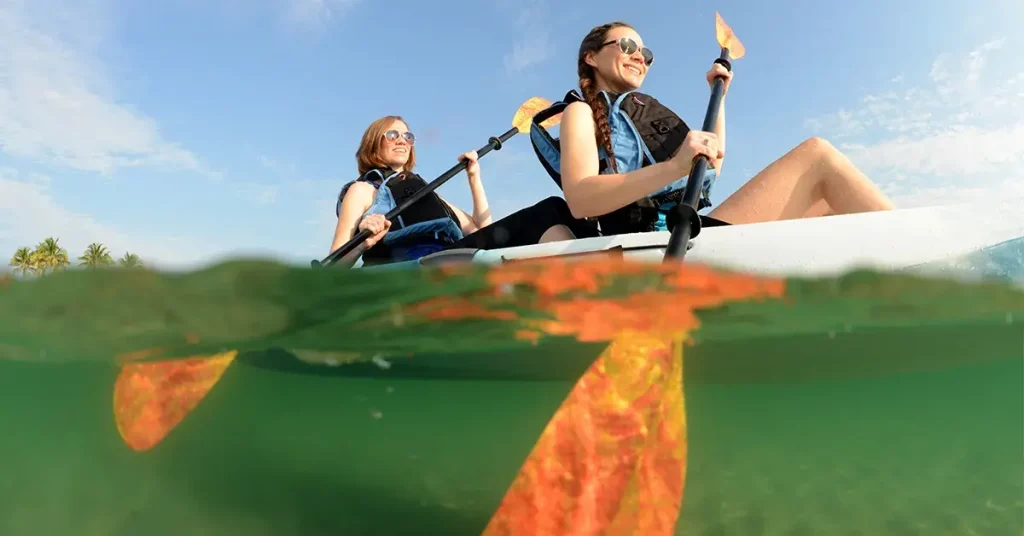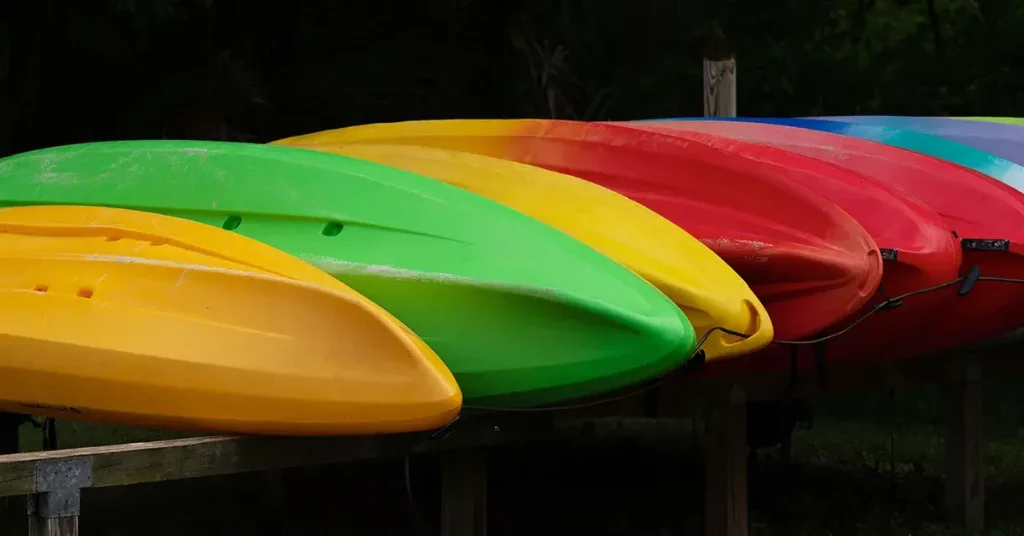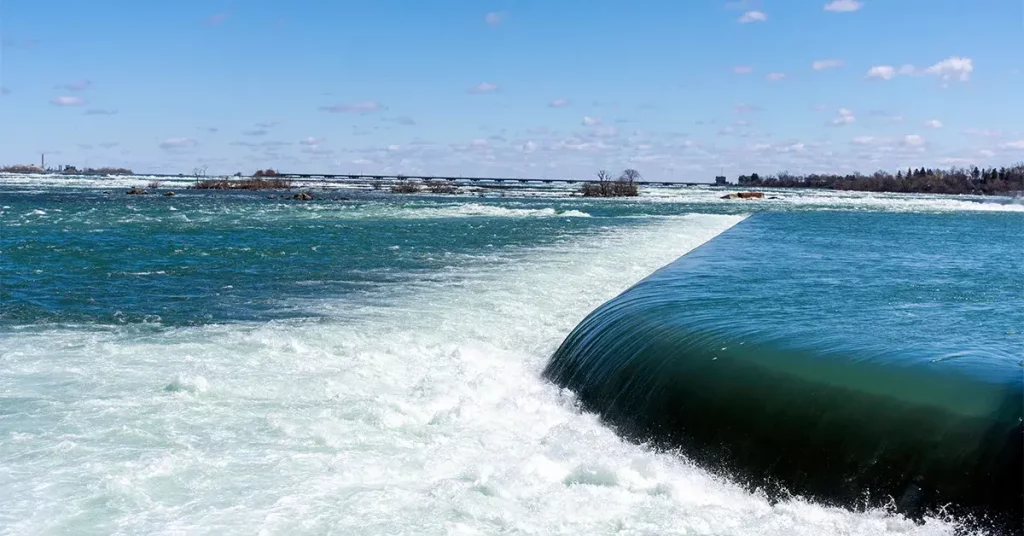There’s nothing more frustrating than trying to paddle a kayak with an improperly sized paddle. Too short and you’ll be knocking your hands into the sides of your craft, too long and you’ll be lugging around excess weight and flopping around like a drunken sailor.
When considering a kayak paddle, there’s a lot more to consider than just the overall length. You’ll also want to pay attention to the overall weight, the blade shape and material, and the ferrules.
I’ll break down the various factors to consider when picking out a kayak paddle, and help you pick the ideal one for your needs.
Kayak Paddle Length
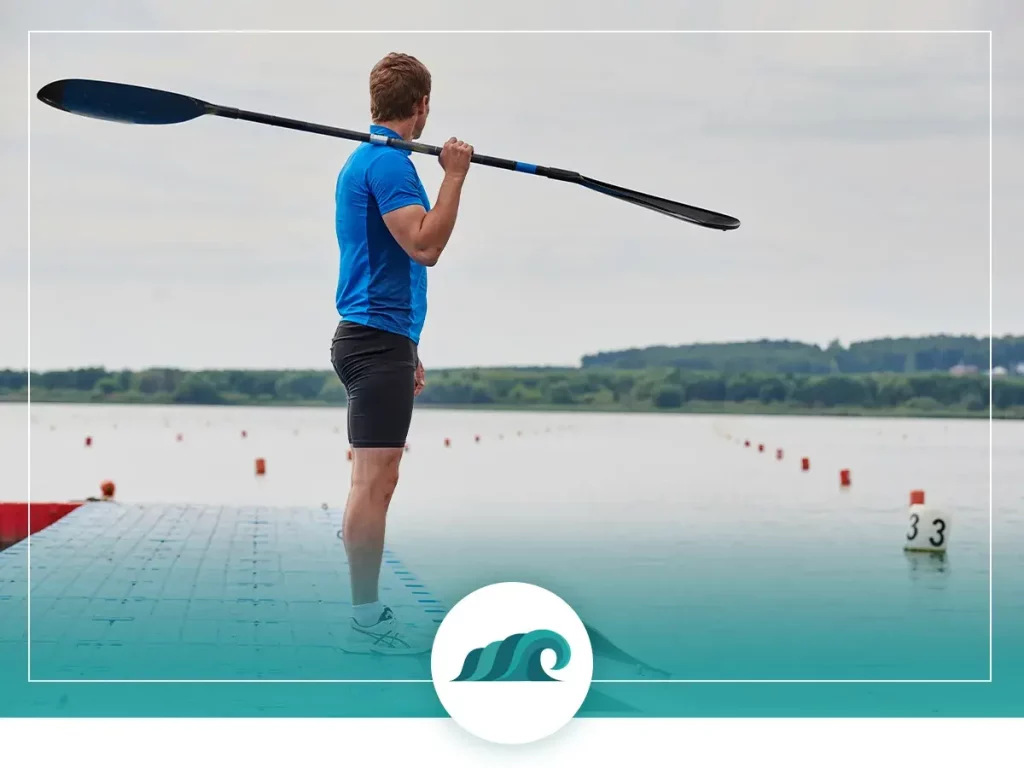
Kayak paddle length varies from person to person and from kayak to kayak. The two key factors when deciding on a paddle length are the height of the paddler and the beam (width) of the kayak.
As you might expect, the taller you are, the longer paddle you’ll need to paddle effectively. Too short and you’ll be smacking your wrists into the sides of your kayak.
Wider kayaks will also necessitate longer paddles. Think of a wide, stable recreational kayak. You’ll need the extra paddle length to clear the hull and get the paddle blade into the water on each stroke.
In terms of width, kayaks generally from widest to narrowest fishing > recreational > touring > sea kayaks. If you have more than one kayak or need a versatile paddle that can handle the different sized craft, there are also adjustable length paddles that let you quickly change the paddle’s overall length on the fly.
This chart gives you a solid idea of the right paddle length based on your height and kayak’s width:
Kayak Paddle Length Chart
| Kayak Width | Under 23″ | 24″ to 28″ | 29″ to 33″ | 34″ and Up |
| Paddler Height | Ideal Paddle Length (cm) | |||
| Under 5′ 5″ | 210 | 220 | 230 | 240 |
| 5′ 5″ to 5’11” | 220 | 230 | 240 | 250 |
| Above 6′ | 220 | 230 | 250 | 260 |
Notice that kayak lengths are measured in centimeters rather than inches. This is the industry standard for all kayak paddles, so you won’t need to worry about converting to and from inches.
Also, notice that paddle lengths come in 10 cm increments. This converts to 4 inches or 2 inches on each side of the paddle. That isn’t much – so you can usually get by with a slightly large or small paddle in a pinch.
Keep in mind this chart isn’t set in stone. Paddlers have different preferences as well as different arm lengths, so going one size up or down is sometimes necessary. A longer paddle will give you more reach, but too long and it can make your paddle stroke inefficient and unwieldy.
If you’re in between sizes it’s generally better to go with the shorter size, although paddlers with longer torsos will benefit from a longer paddle.
Measure your kayak’s width at the widest point on the hull – which is generally located near the midpoint of most kayaks.
Quick and Dirty Sizing Guide
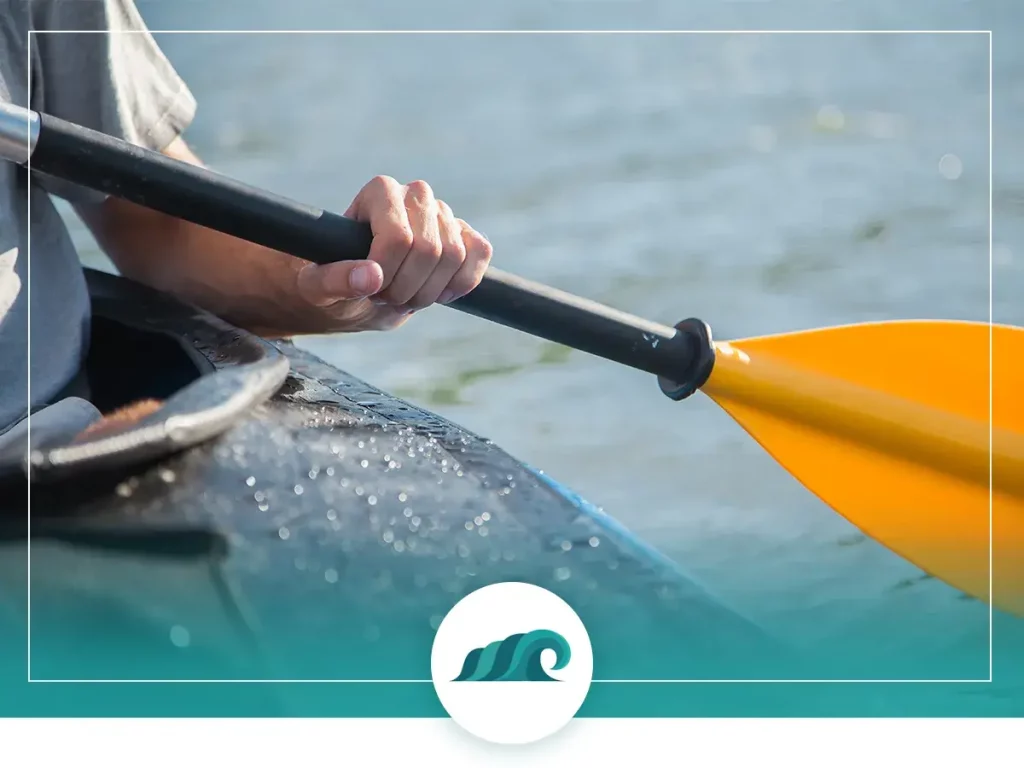
If you’ve already got a few kayak paddles kicking around, or need to size a paddle for someone else, there are a couple of rapid methods you can use to size a kayak paddle.
- Hold your arms out in front of you with bent elbows in your normal paddling posture. Your hands should be 2/3 of the way between the center and end of the shaft. If you’re too close to the blade, the paddle is too long and you’ll need a larger paddle. If you’re too close to the center, the paddle is too small, and you’ll likely need a larger one.
- Hold the paddle upright next to your body. Reach up with your arm and grab the paddle blade with your fingers. For an ideal fit, your fingertips should reach just past the paddle tip.
These methods work well when you need to size a paddle when you’re on the water and don’t have a measuring tape nearby.
Paddling Style (High vs. Low)

In addition to your height and kayak width, your paddling style also has an impact on the right paddle length for you. There are two major styles of paddling: high angle and low angle. The ‘angle’ refers to the angle at which your paddle enters the water.
- High Angle paddling is more vertical. You hold the paddle higher up from the water, which creates a faster, more aggressive paddling style. Whitewater kayakers and aggressive flat-water paddlers utilize this paddling style. A shorter paddle with a wider blade is typically used for this style.
- Low Angle paddling is more horizontal in relation to the water. The paddle is held lower, and the strokes are more relaxed and smoother. You’ll want a slightly longer paddle for this paddling style, with longer and narrower blades.
If you’re not sure which paddling style suits you best, consider how and where you plan to paddle.
High angle paddling lends itself to a faster paddling cadence, so you’ll expend more energy and will be capable of short bursts of high speed. Low angle paddling is more relaxing and allows you to paddle longer while using less of your energy.
Many paddlers will switch between high and low angle paddling depending on the situation. There is also so-called “mid-angle” paddling, which is simply a hybrid somewhere between the two different styles. If you’re buying a paddle exclusively for high angle paddling, then you’ll want to go one size down on the above chart.
Blade Shape
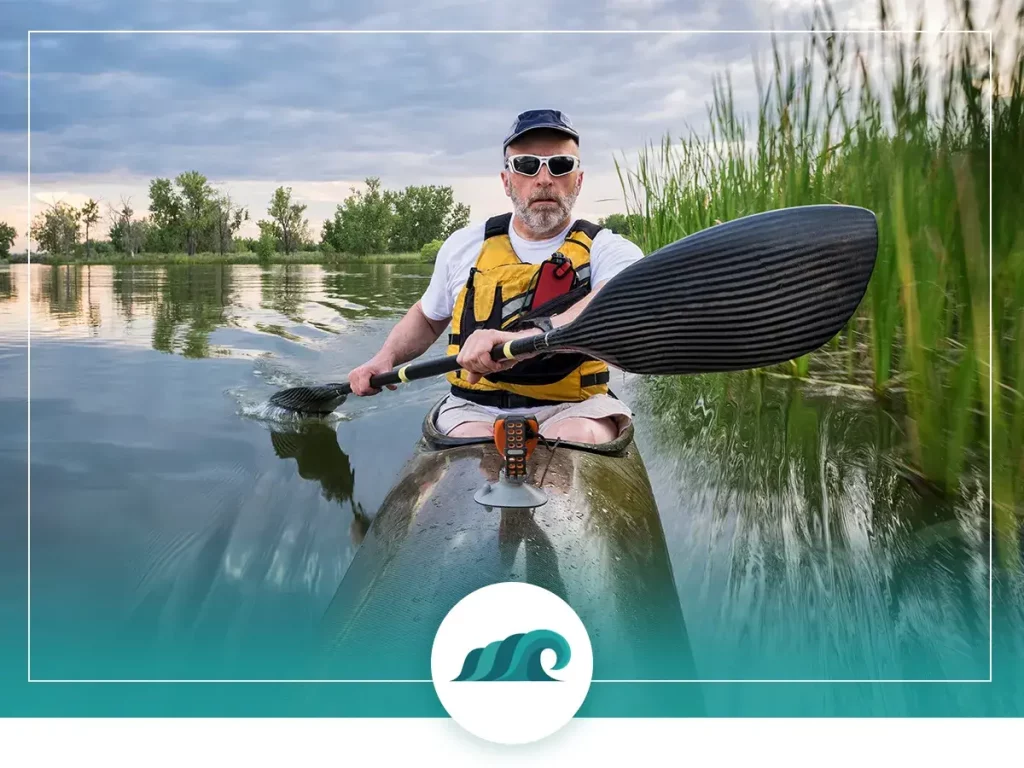
Blade shape ties in closely with paddling style. As mentioned previously, high angle paddles typically use shorter, wider blades than their low angle counterparts. This is due to the way the blade propels your craft through the water. They catch and ‘scoop’ the water, resulting in more power and efficiency.
Low-angle blades are longer and narrower and are designed to ‘glide’ through the water. The stroke used while low angle paddling is less efficient but much easier to maintain for several hours at a time.
Shaft Design
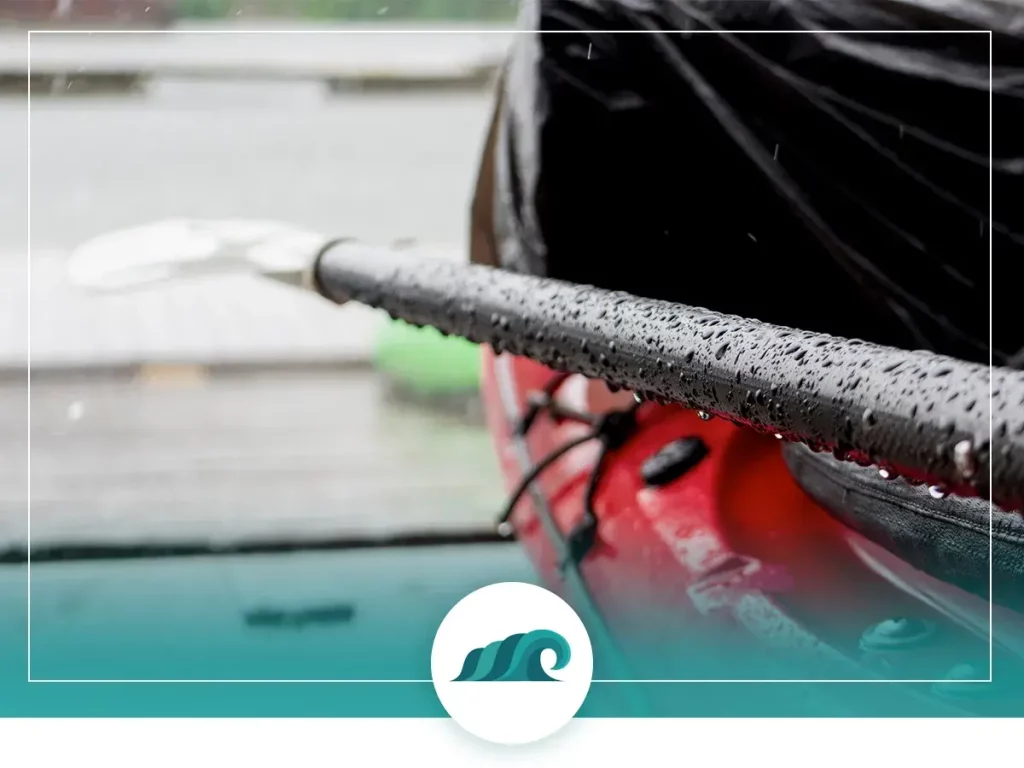
Another key consideration when picking out a paddle is the shaft design. Kayak paddle shafts come in straight and bent designs, as well as different diameters and number of component pieces when broken down.
Straight vs. Bent Shaft
While most of us are familiar with typical straight shaft paddles, less are familiar with bent or “cranked” shaft paddles.
Most kayak paddles come with straight shafts. Straight shaft paddles are lighter, less expensive, and allow for more flexibility in hand placement and wrist position. This makes them a good overall choice for most paddlers, especially for those without serious wrist/hand issues.
Bent shaft paddles force the wrists into a more natural position, which works to correct your hand placement, reduce fatigue, and place less stress on your joints. They’re also a few ounces heavier and tend to cost more than their straight counterparts.
Shaft Diameter
Most kayak paddle manufacturers produce paddles in a standard and a small shaft diameter. If you can’t touch your thumb to your index finger while gripping the shaft, then a standard sized kayak shaft is too large for you, and you’ll to size down to a smaller shaft diameter or youth-sized paddle.
Breakdown Paddles
Most kayak paddles are either two-piece or four-piece designs. Two-piece paddles are more common and work well for most kayaking situations.
Four-piece paddles break down into 2 paddle shaft sections and 2 blade sections, so you can stash them inside a backpack while hiking or camping. If you have a compact folding or inflatable kayak, then a four-piece paddle will break down short enough to stash with your kayak.

